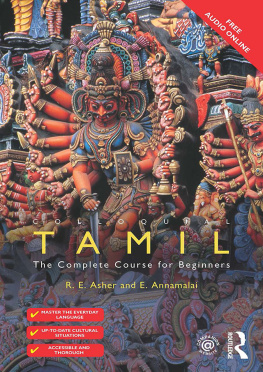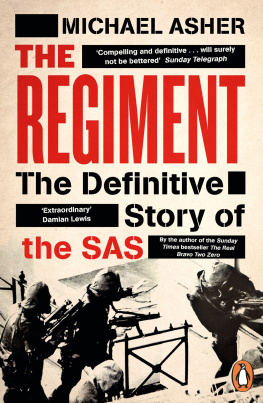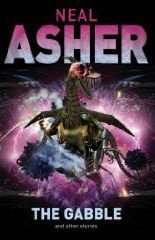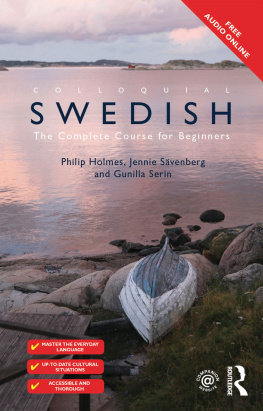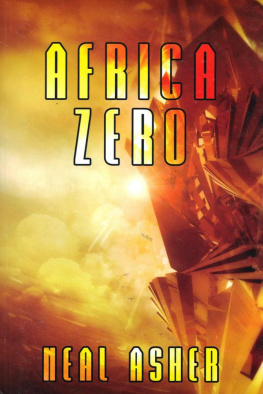Asher - Colloquial Tamil
Here you can read online Asher - Colloquial Tamil full text of the book (entire story) in english for free. Download pdf and epub, get meaning, cover and reviews about this ebook. year: 2015, publisher: Taylor & Francis (CAM);Routledge, genre: Children. Description of the work, (preface) as well as reviews are available. Best literature library LitArk.com created for fans of good reading and offers a wide selection of genres:
Romance novel
Science fiction
Adventure
Detective
Science
History
Home and family
Prose
Art
Politics
Computer
Non-fiction
Religion
Business
Children
Humor
Choose a favorite category and find really read worthwhile books. Enjoy immersion in the world of imagination, feel the emotions of the characters or learn something new for yourself, make an fascinating discovery.
Colloquial Tamil: summary, description and annotation
We offer to read an annotation, description, summary or preface (depends on what the author of the book "Colloquial Tamil" wrote himself). If you haven't found the necessary information about the book — write in the comments, we will try to find it.
Colloquial Tamil — read online for free the complete book (whole text) full work
Below is the text of the book, divided by pages. System saving the place of the last page read, allows you to conveniently read the book "Colloquial Tamil" online for free, without having to search again every time where you left off. Put a bookmark, and you can go to the page where you finished reading at any time.
Font size:
Interval:
Bookmark:

The Colloquial Series
Series Adviser: Gary King
The following languages are available in the Colloquial series:
Afrikaans | German | Romanian |
Albanian | Greek | Russian |
Amharic | Gujarati | Scottish Gaelic |
Arabic (Levantine) | Hebrew | Serbian |
Arabic of Egypt | Hindi | Slovak |
Arabic of the Gulf | Hungarian | Slovene |
Basque | Icelandic | Somali |
Bengali | Indonesian | Spanish |
Breton | Irish | Spanish of Latin |
Bulgarian | Italian | America |
Burmese | Japanese | Swahili |
Cambodian | Kazakh | Swedish |
Cantonese | Korean | Tamil |
Catalan | Latvian | Thai |
Chinese (Mandarin) | Lithuanian | Tibetan |
Croatian | Malay | Turkish |
Czech | Mongolian | Ukrainian |
Danish | Norwegian | Urdu |
Dutch | Panjabi | Vietnamese |
English | Persian | Welsh |
Estonian | Polish | Yiddish |
Finnish | Portuguese | Yoruba |
French | Portuguese of Brazil | Zulu (forthcoming) |
COLLOQUIAL 2s series: The Next Step in Language Learning
Chinese | German | Russian |
Dutch | Italian | Spanish |
French | Portuguese of Brazil | Spanish of Latin America |
Colloquials are now supported by FREE AUDIO available online. All audio tracks referenced within the text are free to stream or download from www.routledge.com/cw/colloquials. If you experience any difficulties accessing the audio on the companion website, or still wish to purchase a CD, please contact our customer services team through www.routledge.com/info/contact.
Colloquial
Tamil
The Complete Course
for Beginners
R.E. Asher and E. Annamalai

First published 2002
by Routledge
2 Park Square, Milton Park, Abingdon, Oxon, OX14 4RN
and by Routledge
711 Third Avenue, New York, NY 10017
Routledge is an imprint of the Taylor & Francis Group, an informa business
Reprinted with corrections in 2004
2002, 2004 R. E. Asher and E. Annamalai
The right of R. E. Asher and E. Annamalai to be identifed as the authors of this work has been asserted by them in accordance with the Copyright, Designs and Patents Act 1988.
All rights reserved. No part of this book may be reprinted or reproduced or utilised in any form or by any electronic, mechanical, or other means, now known or hereafter invented, including photocopying and recording, or in any information storage or retrieval system, without permission in writing from the publishers.
British Library Cataloguing in Publication Data
A catalogue record for this book is available from the British Library
Library of Congress Cataloging in Publication Data
A catalog record for this book has been requested
ISBN: 978-1-138-96034-3 (pbk)
Typeset in Times by
Florence Production Ltd, Stoodleigh, Devon
Contents
Please email with proof of purchase to obtain access to the supplementary content for this eBook. An access code and instructions will be provided.

Introduction
Where Tamil is spoken
The number of speakers of Tamil worldwide is in excess of 65 million. The two principal homelands of the language are India, where it is the mother tongue of 87 per cent of the population of the state of Tamil Nadu in the south-east of the country, and Sri Lanka, where a quarter of the inhabitants are Tamil speakers. In the northern and eastern provinces of Sri Lanka, Tamil speakers are in the majority. During the nineteenth and twentieth centuries, considerable numbers of Tamilians migrated from both India and Sri Lanka to other countries. These countries include Malaysia, Singapore, Mauritius, Fiji, South Africa, the United Kingdom, Germany, the United States, and Canada.
The history of the language
Tamil has a very long recorded history. Inscriptions in the language date back to the middle of the third century BC, and the earliest Tamil poetry some of the finest poetry ever written is thought to have been produced not less than two millennia ago. Good modern translations of the lyrical and bardic poetry of this so-called Sangam age are available in English.
The hundreds of languages spoken in India belong to four distinct language families, of which the two with the largest numbers of speakers are Indo-Aryan and Dravidian. The former are related to the languages of western Europe as members of the larger Indo-European family. The thirty or more Dravidian languages of which Tamil is one are not so related. There has, however, been mutual influence, particularly through the borrowing of words. Modern Tamil, especially the spoken variety, also makes use of a number of English words, as you will see as you progress through this book.
Enjoying Tamil culture
Tamil has a very rich culture, and a visit to Tamil Nadu is particularly rewarding from this point of view alone. One of the dialogues in this volume relates to the renowned rock sculptures and monolithic temples near the shore of the Bay of Bengal at Mahabalipuram carved in the seventh century. Somewhat later comes the magnificent Dravidian style architecture of the great temples, with their towering gopurams, that are to be found in ancient cities throughout the state. The history of Tamil sculpture is a study in itself. Stone is the more commonly used medium, but bronze too has been used over a long period, notably for sculptures of Siva as Nataraja, Lord of the Dance. One famous temple, at Chidambaram, has carvings of poses in the unique Tamil classical dance form bharatha natyam. Dance recitals in this style are given throughout the year, but the most opportune time to see them is in December in Chennai (Madras), where each year there is a great festival of dance and of classical music, both vocal and instrumental. There is a thriving film industry too, and the production of films in Tamil is second in India only to that of Hindi films.
Quite a different aspect of life in Tamil Nadu relates to the fact the state is in the forefront of information technology. Coinciding with the dawn of a new millennium is the creation of a new science city at Taramani in Chennai.
Colloquial and written Tamil
The language of writing differs considerably from the language of everyday conversation so much so that there is no universally accepted way of writing the colloquial variety in Tamil script. This book concentrates on the colloquial language, but devotes a modest amount of space to introducing the written language, on the assumption that learners will want at the very least to decipher signs they might see in travelling in Tamil-speaking parts of the world. What we are calling written language is also the language of formal speech as in platform speaking, lecturing, reading news bulletins on the radio or television, and so on. A knowledge of this formal style is inadequate for anyone who wishes to converse, whether it is to ask the way or to buy a train ticket, a meal, or a postage stamp. Formal speech and writing on the one hand and colloquial speech on the other differ from each other in a number of ways, for instance, in the important grammatical endings that are added to nouns and verbs and also in the choice of words. You will see something of the nature of these differences in Lesson 16.
Next pageFont size:
Interval:
Bookmark:
Similar books «Colloquial Tamil»
Look at similar books to Colloquial Tamil. We have selected literature similar in name and meaning in the hope of providing readers with more options to find new, interesting, not yet read works.
Discussion, reviews of the book Colloquial Tamil and just readers' own opinions. Leave your comments, write what you think about the work, its meaning or the main characters. Specify what exactly you liked and what you didn't like, and why you think so.

